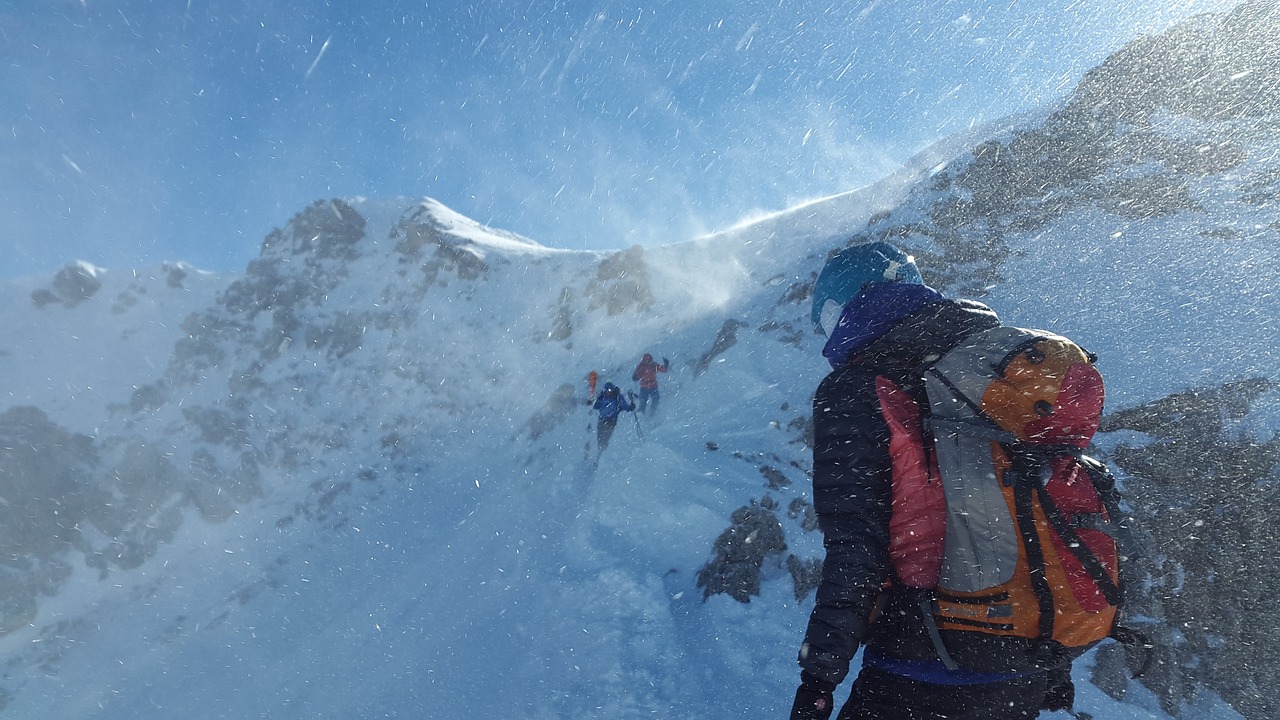A year of extreme weather means risky conditions in the backcountry

By now most of us are used to reading news reports of record-setting weather conditions around the globe. However, this year has brought new context to just what intensified weather patterns might mean for the average American. Us adventure seekers are even more at risk.
In 2017, the National Centers for Environmental Information recorded sixteen different climate events that totaled over a billion dollars in damages. Beyond the monetary impact on the country, these disasters displaced entire communities, changed landscapes forever and claimed unprecedented numbers of lives. We’re not just talking about one type of storm, either.
This year the west coast saw wildfires in record force from California all the way through to Canada as well as in the south-east. Flooding at the beginning of the year made way for droughts by the end of the year. Multiple hurricanes slammed the eastern coastline. Puerto Rico is still without power.
Then winter came and absolutely annihilated the east coast. Record low temperatures and indomitable snowfall covered cities. In Massachusetts, streets were flooded by seawater which subsequently froze. I haven’t even mentioned the tornadoes, hail, and high winds that hit the central US yet.
Adventure seekers should exercise the most care

All in all, it’s been a crazy year. And all signs are pointing to more extreme weather conditions in the years to come. To the average homeowner, this news sounds scary enough. But for those of us who spend our free time in the mountains, on the water, and deep in the woods, this bears special consideration.
Because it’s one thing to be caught by a record-breaking winter storm when you’re safely within the walls of your house. It’s something entirely different when you’re days deep in the mountains. The good news is that those of us who are going outdoors often check the weather more often. It’s already built into our awareness as adventurers that we rely on favorable conditions. However, considering the trends of recent years, it’s even more important that we double check the forecast and take extra precautions.
How to account for extreme weather

If you tend to play in the snow, you should already be very well connected to your local weather reports. Avalanches are just a part of life in the mountains. Now, with increasingly unpredictable storm patterns avalanche danger swings to erratic highs and lows. Experienced mountaineers are already well in touch with these risks. The pros always carefully assess the snow-pack before heading out. But if you’ve spent less than ten years in the mountains, you should take extra precautions.
Don’t go out when the weather is behaving erratically. It’s especially tempting to go hunt for powder when feet of fresh snow are falling every hour. However, that’s also when snow-pack is most unstable, and the risk is highest. Listen to the experts and exercise caution over confidence.
If you play in the desert, recognize that risks are also magnified. It’s not just drought that hits the dry parts of the country. Heavy rain can cause deadly flash floods. Extreme temperature patterns can put you beyond the safe capacity of the gear you expected to need. This year I pulled into the Utah desert during what I supposed to be the middle of the climbing season. But my first night in Moab, it snowed. It doesn’t matter what environment you’re out in. The more we see extreme weather conditions, the more respect we all should have for the natural world.
Don’t let the weather stop you
Now, all these cautionary words shouldn’t be scaring you back into your houses. And you definitely shouldn’t put your gear back on the racks. After all, the weather has always been part of the risk and the beauty of experiencing the outdoors.
If there were no storms, there would be no snow. There would be no rain. And there would be no flames to bring the forests back to the beginning and reset the natural cycles of our planet. It’s only through the planet’s patterns that living things can thrive.

So definitely don’t hang up your boots or stow your skis this season. Not a chance. This is just meant to remind you that what we do is inherently risky. The forces of nature, although often enjoyable and mild, are liable to rear into terrifying power with little warning. Recent years have served as a stark reminder that the world is a wild place. It should not be taken lightly.
So, exercise caution, read weather reports carefully, and plan accordingly. Take extra equipment when you think you might need it and make sure your partners share your respect for the natural risks involved in your adventure of choice.
Most importantly, exercise the ability to turn back. Recognizing unfavorable risk and knowing when to call it a day are undoubtedly the most important skills you can take into the backcountry. There’s no shame in coming home safe.
If you have any comments then please drop us a message on our Outdoor Revival Facebook page
If you have a good story to tell or blog let us know about it on our FB page, we’re also happy for article or review submissions, we’d love to hear from you.
We live in a beautiful world, get out there and enjoy it. Outdoor Revival – Reconnecting us all with the Outdoors.
